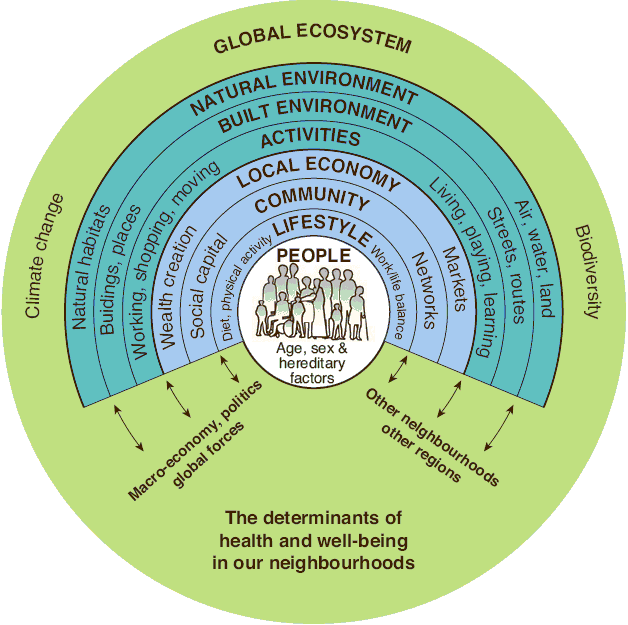What is environmental health?
This section gives information about what environmental health is, and why the environment is important to human health.
On this page:
What is environmental health?
The environment can directly and indirectly impact on our health and wellbeing. Environmental health examines the interaction between the environment and our health.
We use the following definitions:
- Environmental health refers to aspects of human health (including quality of life) that are determined by physical, chemical, biological, social and psychosocial factors in the environment.
- Environment broadly includes everything external to ourselves, including the physical, natural, social and behavioral environments.
- Health is a state of complete physical, mental and social wellbeing, and is not merely the absence of disease or illness.
Why is the environment important for health?
We need safe, healthy and supportive environments for good health. The environment in which we live is a major determinant of our health and wellbeing. We depend on the environment for energy and the materials needed to sustain life, such as:
- clean air
- safe drinking water
- nutritious food
- safe places to live.
Many aspects of our environment – both built and natural environment – can impact on our health. It’s important that we interpret health issues in the wider context of our environment and where we live
Figure 1: Determinants of health and well-being in our neighbourhoods

Source: Barton and Grant 2006 [1]
Health effects related to the environment
Many aspects of the environment can affect our health. Environmental hazards can increase the risk of disease, including cancer, heart disease and asthma [2].
Table 1 gives examples of how different aspects of the environment can affect our health.
Table 1: Environmental exposures and related human health effects
| Environmental exposure | Examples of health effects |
| Outdoor air pollution | Respiratory conditions, cardiovascular disease, lung cancer |
| Unsafe drinking water | Diarrhoeal (gastrointestinal) illnesses |
| Contaminated recreational water | Diarrhoeal (gastrointestinal) illnesses; eye, ear, nose and throat infections |
| Mosquitoes, ticks and other vectors | Malaria, dengue fever, Rickettsial disease |
| UV (ultraviolet light) exposure |
Too much: melanoma, non-melanoma skin cancer, eye cataracts Too little: vitamin D deficiency, leading to rickets, osteoporosis and osteomalacia |
| Second-hand smoke exposure |
In infants: low birthweight, sudden unexpected death in infancy (SUDI) In children: asthma, lower respiratory infections, middle ear infections In adults: ischaemic heart disease, stroke, lung cancer |
| Household crowding | Infectious diseases, including lower respiratory infections |
| Cold and damp housing | Excess mortality |
| Climate change | Infectious diseases, including giardiasis, cryptosporidiosis and salmonellosis; heat stroke |
| Hazardous substances | Poisoning, burns, dermatitis |
| Lead |
In children: developmental delays, behavioural problems In adults: increased blood pressure |
| Asbestos | Breathing difficulties, lung cancer, mesothelioma |
| Noise | Hearing loss, cardiovascular problems, insomnia, psychophysiological problems |
Environmental burden of disease worldwide
Globally, environmental factors contributed to an estimated 23 percent of all deaths in 2002.
Children under 15 years were particularly affected, with 36 percent of all deaths accounted for by environmental factors [3].
Even in developed countries, environmental factors play a large role in the burden of disease.
In 2002, 17 percent of all deaths were attributable to environmental factors in developed countries in the Western Pacific (New Zealand, Australia, Japan, Singapore and Brunei Darussalam).
For more information on our New Zealand Environmental Burden of Disease Study, go to the environmental burden of disease webpage.
